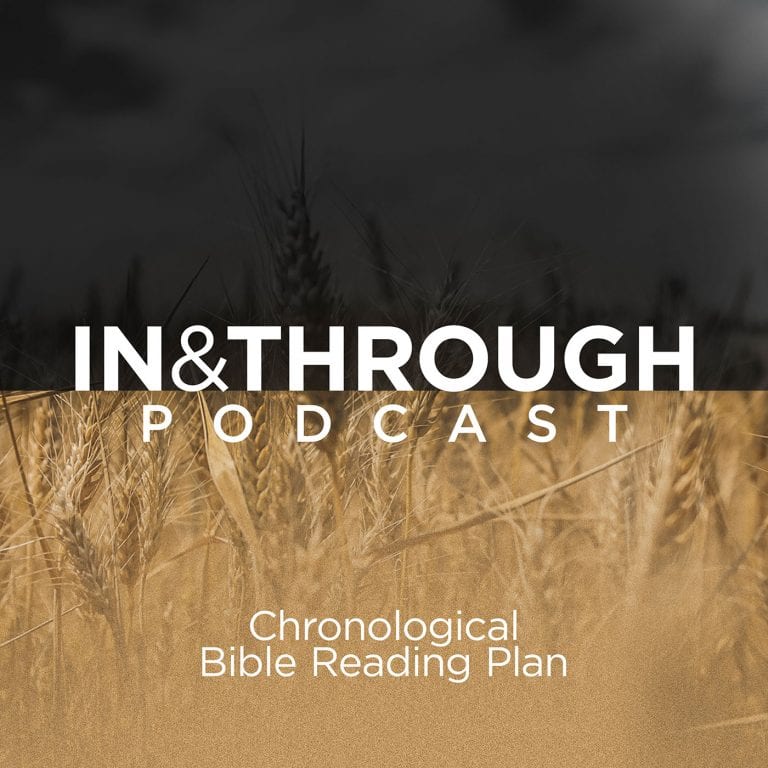It is difficult to quantify the impact that the late Rev. John Gilmour has had on the Christian faith in Canada, specifically in Baptist churches.
Born in Ayr, Scotland in 1792, despite his academic brilliance, Gilmour opted out of his formal education to become a marine merchant at the young age of nine. On one particular trip at Sea, Gilmour’s ship never returned home. It was at the time of the Napoleonic wars, and the French had captured him and his crew.
During his time in prison, Gilmour spent ample time reading and studying. He mastered the French language and read everything he could get his hands on.
Genuine Faith
Gilmour had his faith struggles like anybody else. He had rejected the Christian faith of his parents and for the first three years of imprisonment, he paid no attention to religion. Eventually, he began searching for purpose and joined a literary society.
This marked the beginning of a newfound curiosity for religion. Gilmour poured over religious literature and even attended worship services occasionally. It was recounted that “his mind was racked with turmoil and his heart filled with anguish.” Finally, it was at a prayer meeting that a young man pointed out to Gilmour that Christ would save him, and he was born again.
Shortly after Gilmour’s conversion, he began forming his own theology. The minister to the prisoners was a Presbyterian who preached on the necessity of having faith, the need for church membership. He also encouraged the men to read the New Testament and discern the question of baptism. After a thorough reading, Gilmour became in favour of believer’s baptism.
So, upon returning home to Scotland, he settled in Irvine, was baptized and received into the Baptist Church. He also met Janet Walker there, who later became his wife.
For work, Gilmour took a job as a schoolmaster but was challenged by the lack of ministers. He offered excuses for why he wasn’t fit for ministry: he lacked the necessary academic background, and later that he was a few pounds in debt. However, this resistance only lasted so long as his convictions and the counsel of others eventually pushed him to accept God’s call, which he did after a day of fasting and prayer.
Gilmour was affirmed in his decision almost immediately, as a gentleman then offered to cover his tuition costs to attend Horton Academy in Bradford, England. He began in 1816 and spent four years of intense study.
Gilmour went on to face many more faith struggles even as a minister. He had a health scare in Montreal that forced him to resign from his Pastorate at First Baptist Church in 1835. Gilmour and his wife faced deep loneliness while serving Aboriginal communities in the Peterborough area in 1837 and 1838. One of his journal entries described his distraught emotional state:

My dear departed wife and I felt much the lack of church fellowship, and I began to question the propriety of continuing in the locality.
Then, by 1849 Canada’s first Baptist Bible College that he had incepted in Montreal in 1838 was forced to close because of financial difficulty.
Yet in spite of all the obstacles that could have been detrimental to his spiritual well-being, Gilmour sought the Lord out of reverence and humility, and he was aided.
A True Pioneer
Following his graduation from school (Horton Academy), Gilmour supplied in Greenock, Scotland for five months before becoming the first-ever Baptist Pastor in Aberdeen in 1821.
This was only the beginning of Gilmour’s courage to minister in unfamiliar places. He could have secured churches in more established England communities, but he was always directed to the greater challenge.
After nine profitable years in Aberdeen, a Scottish immigrant Pastor named John Edwards that had settled in the Ottawa Valley in Canada invited Gilmour to come “to lead the little flock into larger fields.” Edwards had been directed to Gilmour by a member of the church he had served at in Greenock. The Scot from Ayr accepted the invitation as a call from the Lord. Once again, he left what he knew. Gilmour resigned from Aberdeen, and him and his family sailed to Montreal.
In 1831, after preaching to several gathered at a school room in Montreal, First Baptist Church was erected. The congregation began with 25 members and quickly grew to 119. Unfortunately, a major cholera outbreak occurred in the city and by 1835 ill health forced Gilmour to retire.
From there, he and his wife moved to the Ottawa Valley so that he could serve as Edwards’ assistant. This became the centre of missionary efforts in Eastern Canada. In fact, in the fall of 1835 Canada’s first association of Baptist churches was founded. This also led to a new burden that Gilmour had to start a ministry training school in Canada.
Despite his poor health, Gilmour sailed back to Great Britain to ask for financial support in order to set up the school, and to his amazement, he received twice what he asked for. Canada Baptist College was born. The institution began in Montreal, but, unfortunately, circumstances led to its closure in 1849. Years later, prominent Baptists established the Canadian Literary Institute (1857). This eventually morphed into McMaster University, and today the seminary is McMaster Divinity College.
Gilmour’s pioneer efforts didn’t stop there. By 1837 his health was restored upon his return to the Ottawa Valley. He took a post with the New England Company to serve with Aboriginal people at Rice Lake and Chemong Lake near Peterborough. Gilmour’s role included spiritual oversight, as well as assisting with town-building, agriculture, and education.
While serving the indigenous people, Gilmour also began calling on the settlers of Chemong Lake to let him preach in their homes and schools. In 1838, James Mann was the first to accept the call to become a Baptist and on November 4th, Mann along with his wife, father and mother, and four others were baptized in Chemong Lake.
The small group organized a church immediately afterwards. They went on to construct a building, first known as Line Church in 1840, which is today Gilmour Memorial Baptist Church; Gilmour served as the Pastor until 1843.

Less than three years later, Gilmour helped establish a second congregation in north of present-day Selwyn township. The church was first erected as North Chapel in 1845, and is today Selwyn Outreach Centre.
Simultaneously, Gilmour launched a Baptist mission in the city of Peterborough in 1844. He even donated a lot on Aylmer Street that was used to build its first brick chapel. The first services were held in 1846 in Peterborough Baptist Church, which is known today as Murray Street Baptist Church.
A Minister with the People
While Gilmour was described as zealous and intense, his gifting was not limited to preaching from the pulpit. Throughout his ministry, he excelled at understanding his surroundings. He not only delivered a compelling gospel message but had strong relational skills.
For example, in his early years as an intern minister at Greenock, Gilmour sought the opportunity to preach to the crews of ships in the harbour. Having spent several years as a British sailor, Gilmour understood their ambitions and hopes.
While serving as John Edward’s assistant in the Ottawa Valley in 1835, Gilmour helped bridge churches together in Ontario and Quebec with a Baptist association and mission’s society. This came at a crucial time as churches were struggling to keep up with how quickly Brits were immigrating.
God used Gilmour along with other Pastors and mission workers from the Ottawa Valley churches to not only meet these demands but to bring about a revival that resulted in a significant increase in Baptist churches and members in the region.
Later in 1843, after establishing his first church in present-day Selwyn Township north of Peterborough, Gilmour sought to expand a second Baptist congregation because of the needs-based on his missionary activities and contacts throughout the region. These regular routes that he travelled while aiding to the Native reserves led him to establish both the church in northern Selwyn and in Peterborough in 1846.
Gilmour continued to provide some oversight of these Baptist churches even into his later years as he resided in Peterborough. When the Canadian Baptist Union was formed, it came as no surprise that Gilmour would serve as their first president. His leadership was admired by many. On May 22, 1869 Rev. John Gilmour died in his 78th year. As many would find out later, Gilmour had an invitation to preach that next Sunday.
The Peterborough Examiner obituary documented:
We shall all miss the silver tones of his musical voice in the pulpit and on the platform, and feel that we have lost a leading public man, as well as a mentor and friend. He was well read and informed on almost all leading useful subjects, no one could spend an hour with him without being both instructed and delighted.
People from all different facets of his life, including several First Nations Peoples paid their respects at the procession.
The obituary published a day later in the Peterborough Review read:
The funeral was the largest, it is said, which has ever been in Peterboro’.
*An earlier version of this article is published here. Used by permission.























